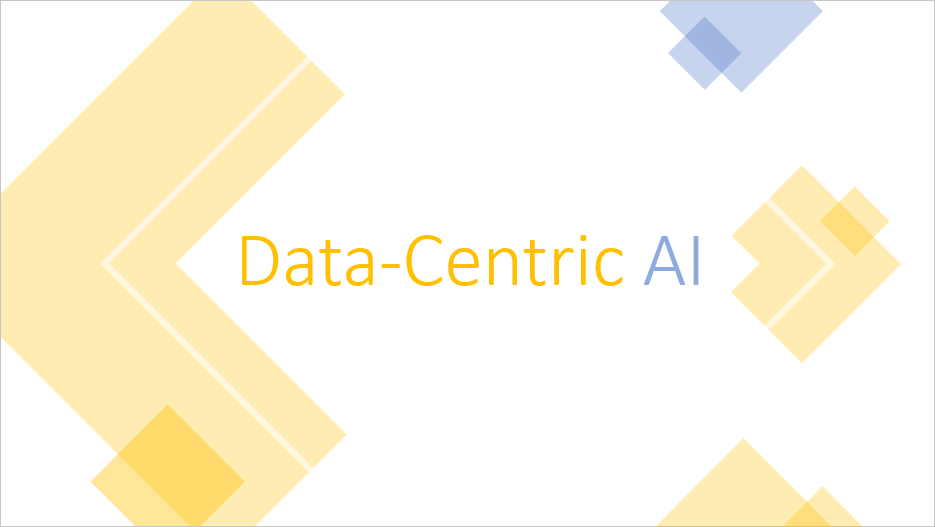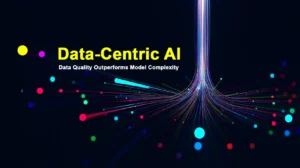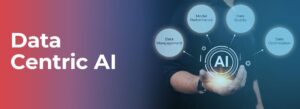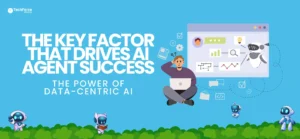Data-Centric AI: Shifting the Focus from Models to Data
Introduction
Artificial Intelligence (AI) has made remarkable progress over the past decade, thanks to advancements in algorithms, computing power, and vast datasets. Traditionally, the AI community has placed much of its focus on model-centric approaches—developing increasingly complex models such as deep neural networks and large language models to achieve state-of-the-art performance. However, as these models have matured, another paradigm has emerged at the forefront: Data-Centric AI (DCAI).
Instead of prioritizing the creation of bigger and more sophisticated models, data-centric AI emphasizes improving the quality, relevance, and structure of the data used to train these models. The central idea is simple: the success of AI systems depends as much on the data pipeline as on the model architecture.
In this article, we will explore what data-centric AI is, why it matters, how it contrasts with traditional approaches, its benefits, real-world applications, challenges, and the future of this transformative methodology.
What is Data-Centric AI?
Data-centric AI is an approach that focuses on systematically improving datasets to enhance AI performance. While model-centric AI often involves tweaking hyperparameters, adding layers, or designing novel architectures, the data-centric approach asks:
-
Is the data representative of the real-world problem?
-
Is it clean, well-labeled, and balanced?
-
Does it reflect edge cases and anomalies?
-
Can it be structured in a way that maximizes model generalization?
Andrew Ng, one of the leading voices in AI, has described data-centric AI as a shift in focus. Instead of endlessly refining models, practitioners should ensure the training data is of high quality and captures the task accurately.
Why the Shift Towards Data-Centric AI?
There are several reasons why the AI community is increasingly adopting a data-centric philosophy:
-
Models Have Plateaued:
Many state-of-the-art AI models already achieve high performance. Incremental gains from model tweaking often require massive resources but yield limited improvements. -
Data Drives Generalization:
A well-structured dataset enables a relatively simple model to outperform a complex one trained on noisy or biased data. -
Real-World Applications Demand Robustness:
Models deployed in healthcare, finance, or autonomous vehicles must handle edge cases reliably. This requires curated, balanced, and inclusive datasets. -
Lower Costs & Accessibility:
Improving datasets often requires fewer resources than training larger models with billions of parameters. This democratizes AI for smaller organizations and startups. -
Bias and Fairness Issues:
Biased or unrepresentative data leads to biased AI outcomes. Data-centric approaches can mitigate such issues by focusing on dataset fairness.
Data-Centric AI vs. Model-Centric AI
| Aspect | Model-Centric AI | Data-Centric AI |
|---|---|---|
| Focus | Designing better algorithms and architectures | Improving data quality, diversity, and labeling |
| Primary Effort | Hyperparameter tuning, network design | Data cleaning, annotation, and structuring |
| Resources Required | High computing power, large-scale experiments | Human expertise in domain knowledge and labeling |
| Performance Bottleneck | Model capacity | Data representativeness and quality |
| Scalability | Requires more compute as models grow | Scales by improving datasets, often cheaper |
Both approaches are important, but data-centric AI complements model-centric AI by ensuring the foundation—data—is strong before investing heavily in complex models.
Core Principles of Data-Centric AI
-
High-Quality Labels:
Correct and consistent labeling is vital. For instance, in medical imaging, expert consensus labeling drastically improves diagnostic accuracy. -
Balanced Representation:
Datasets must represent real-world diversity to avoid bias. For example, facial recognition systems should include data across different ethnicities, ages, and genders. -
Data Augmentation:
Synthetic data generation, noise injection, and augmentation techniques help models generalize better. -
Iterative Refinement:
Data-centric AI treats datasets as evolving assets, continuously refined as new data becomes available. -
Automation of Data Pipelines:
Automated data cleaning, annotation tools, and active learning methods reduce manual overhead. -
Domain Knowledge Integration:
Collaborating with experts ensures datasets align with domain-specific nuances, especially in fields like law, medicine, or engineering.
Benefits of Data-Centric AI
1. Improved Accuracy with Smaller Models
With high-quality data, even relatively simple models can achieve high performance, reducing dependence on massive computational resources.
2. Enhanced Fairness and Inclusivity
Data-centric methods reduce biases by ensuring datasets reflect diverse real-world conditions.
3. Faster Deployment of AI Systems
Cleaner, well-labeled datasets accelerate training and reduce debugging cycles.
4. Cost-Effectiveness
Improving datasets is often less resource-intensive than developing and training larger AI models.
5. Greater Reliability
By focusing on edge cases, outliers, and domain-specific variations, models become more robust in real-world scenarios.
Applications of Data-Centric AI
1. Healthcare
Medical AI systems rely heavily on clean, annotated data. For example, diagnostic imaging AI improves dramatically when radiologists provide accurate, standardized labels.
2. Autonomous Vehicles
Self-driving cars need datasets that include edge cases like unusual weather, rare road signs, or unexpected pedestrian behavior. Data-centric curation improves safety.
3. Finance
Fraud detection models benefit from datasets enriched with rare fraudulent activities, ensuring robust identification without false positives.
4. Natural Language Processing (NLP)
Chatbots, translation systems, and virtual assistants rely on clean, unbiased datasets. Curated multilingual corpora improve inclusivity and performance.
5. Retail and E-commerce
Recommendation systems perform better when datasets accurately capture consumer behavior across different demographics.
6. Agriculture
AI in precision farming depends on datasets representing diverse soil types, weather conditions, and crop diseases.
Tools and Techniques in Data-Centric AI
-
Active Learning: Prioritizing labeling of the most informative data samples.
-
Data Versioning Systems: Tools like DVC (Data Version Control) manage dataset iterations.
-
Automated Labeling Tools: Semi-supervised and weak supervision frameworks accelerate annotation.
-
Synthetic Data Generation: Techniques like GANs generate realistic data when real-world samples are scarce.
-
Error Analysis Pipelines: Systematically identifying and correcting mislabeled or noisy data.
Challenges in Data-Centric AI
-
Data Privacy and Security:
Collecting and refining sensitive datasets, especially in healthcare and finance, must comply with regulations. -
High-Quality Annotation Costs:
Expert labeling (e.g., by doctors) is expensive and time-consuming. -
Bias Persistence:
Even with careful curation, some biases may remain hidden in datasets. -
Scalability Issues:
While data-centric AI reduces reliance on massive models, large-scale data cleaning still requires significant effort. -
Tooling Gaps:
Though improving, data-centric AI still lacks the mature ecosystem of tools that model-centric approaches enjoy.
The Future of Data-Centric AI
The future of AI will likely involve a synergy between model-centric and data-centric approaches. As models like GPT, BERT, and multimodal architectures reach saturation, the focus will increasingly shift toward data pipelines that fuel these systems.
Emerging trends include:
-
Automated Data-Centric Frameworks: Platforms that standardize data cleaning, augmentation, and validation.
-
Data Quality Metrics: Standard benchmarks to measure dataset quality, similar to model benchmarks.
-
Federated and Privacy-Preserving Data Sharing: Techniques to allow multiple organizations to build data-rich models without compromising privacy.
-
Synthetic Data Ecosystems: As real-world data becomes harder to obtain, synthetic datasets will fill gaps while maintaining quality.
Conclusion
Data-Centric AI represents a paradigm shift in artificial intelligence. While algorithms remain critical, the real power of AI lies in the data it consumes. By focusing on dataset quality, diversity, and structure, organizations can unlock more accurate, fair, and reliable AI systems without endlessly escalating model complexity.
In the coming years, the AI landscape will likely see a balance where robust datasets and smart models work hand in hand. For businesses, researchers, and policymakers, embracing data-centric AI isn’t just an optimization—it’s the pathway to building trustworthy, scalable, and impactful AI systems.
https://bitsofall.com/https-yourblog-com-climate-and-eco-driving-ai-sustainable-mobility/
https://bitsofall.com/https-yourwebsite-com-biological-interactions-the-web-of-life/
Language Models: The Foundation of Modern Artificial Intelligence
AI Meets Game Theory: Transforming Social Scenarios with Intelligent Decision-Making







